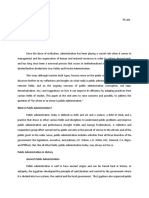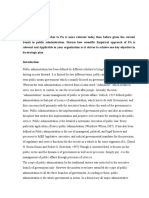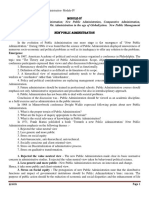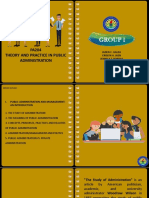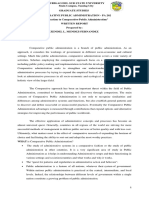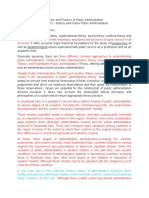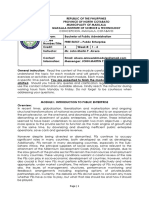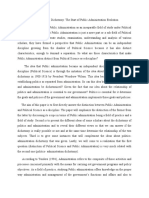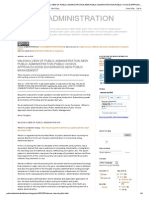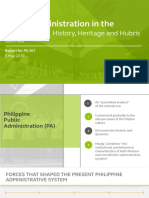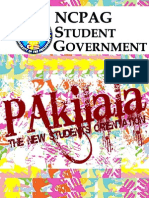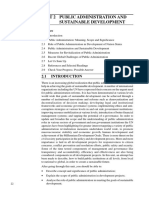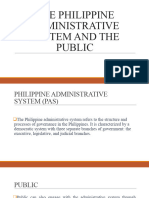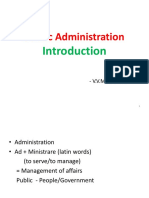0% found this document useful (0 votes)
222 views24 pagesPhilippine Public Administration Lesson 1
Public Administration has evolved from being a subset of political science to an independent field, reflecting the shift from a police state to a social service state. It encompasses the activities of government in implementing public policies and is characterized by a bureaucratic structure that serves the public interest. The document discusses various definitions, perspectives, and the scope of Public Administration, highlighting its significance in governance and societal well-being.
Uploaded by
Karen LorenoCopyright
© © All Rights Reserved
We take content rights seriously. If you suspect this is your content, claim it here.
Available Formats
Download as PDF, TXT or read online on Scribd
0% found this document useful (0 votes)
222 views24 pagesPhilippine Public Administration Lesson 1
Public Administration has evolved from being a subset of political science to an independent field, reflecting the shift from a police state to a social service state. It encompasses the activities of government in implementing public policies and is characterized by a bureaucratic structure that serves the public interest. The document discusses various definitions, perspectives, and the scope of Public Administration, highlighting its significance in governance and societal well-being.
Uploaded by
Karen LorenoCopyright
© © All Rights Reserved
We take content rights seriously. If you suspect this is your content, claim it here.
Available Formats
Download as PDF, TXT or read online on Scribd
/ 24

